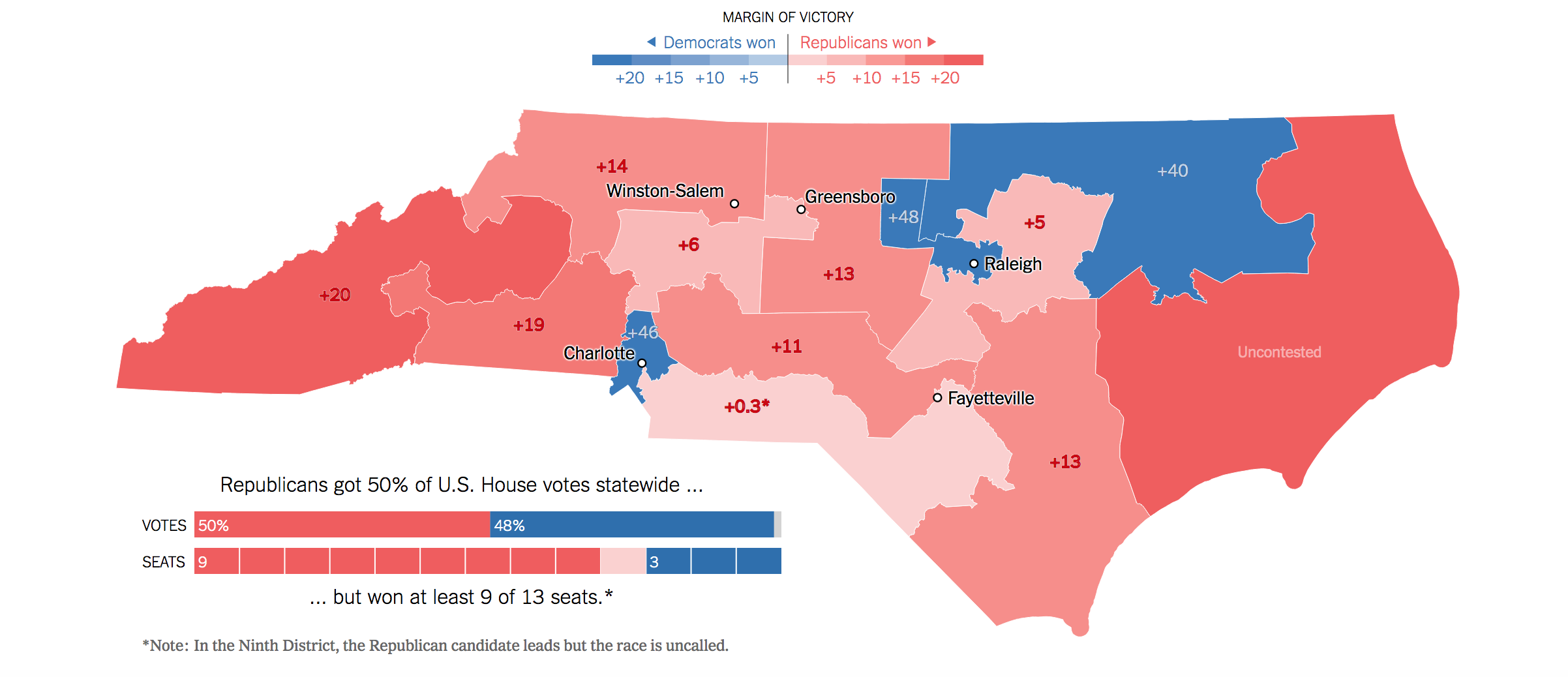The problems with the way we choose our president are numerous and severe, including:
disproportionate attention to swing states (both during and after elections);
effective disenfranchisement of citizens who live in “safe” states for one party but prefer another party, leading to low turnout;
threats to our national security due the small number of states a foreign hacker can target to change the outcome of the election;
the fact that the winner of the election may not be the person who got the most votes—an outcome that we will see more and more.
Some people, recognizing the seriousness of the problems with our system, have suggested an alternative: allocating electoral votes by congressional districts instead of giving all of a state’s votes to the plurality winner.
Each state has a number of electors equal to its representation in Congress—two votes for the Senate, and a number that varies based on the state’s population for the House. Under this proposed system, each state would allocate two votes at large for the overall winner of the state and the rest of the electors would go to the candidate that wins each of the congressional districts. This is how Maine and Nebraska allocate their electoral votes.
Proponents of this system argue that it would be more fair, and that it would be less likely to result in a candidate winning the national popular vote while losing the Electoral College. However, this is not true for one simple reason: gerrymandering.
Gerrymandering is a serious problem with our representative system. For example, in 2016 and 2018, Republican congressional candidates in North Carolina won about 50% of the congressional votes in that state, but claimed victory in 10 out of the states 13 districts (the Ninth District will have to vote again following election fraud in 2018).
Under this map, a Democratic candidate could get a plurality of votes in North Carolina (as Obama did in 2008) but still only be awarded only 5 out of the state’s 13 electoral votes (winning in 3 districts plus the 2 at-large votes).
Because of gerrymandering, allocating electors by congressional district will actually be more likely to result in popular vote losers becoming president than the current system. If the 2012 election had been decided based on congressional districts, Mitt Romney would have defeated Barack Obama in the Electoral College 274-264, despite losing the popular vote by nearly five million votes. Donald Trump also would have won under this system in 2016 despite losing the popular vote. The incentive to gerrymander would increase exponentially if congressional districts determined control of the White House as well as control of the House, making the problem even worse than it is now.
As candidates adjusted their strategy to focus on the 16% of districts that are “swing” districts, a split between the popular vote and the electoral college will be even more likely.
The vast majority of voters would live in “safe” districts, meaning that most people still would have little incentive to turn out to vote and their concerns and issues will be ignored as they lose out on federal funding to swing districts. The swing districts will become the new target for election meddlers.
Proponents of district-based electoral allocation recognize that gerrymandering would have to be addressed before the system would be fair. However, the Supreme Court has refused to address partisan gerrymandering, no matter how egregious.
Accordingly, allocation of electors based on congressional districts would only make elections more unfair and would not solve the problems with our current system.



